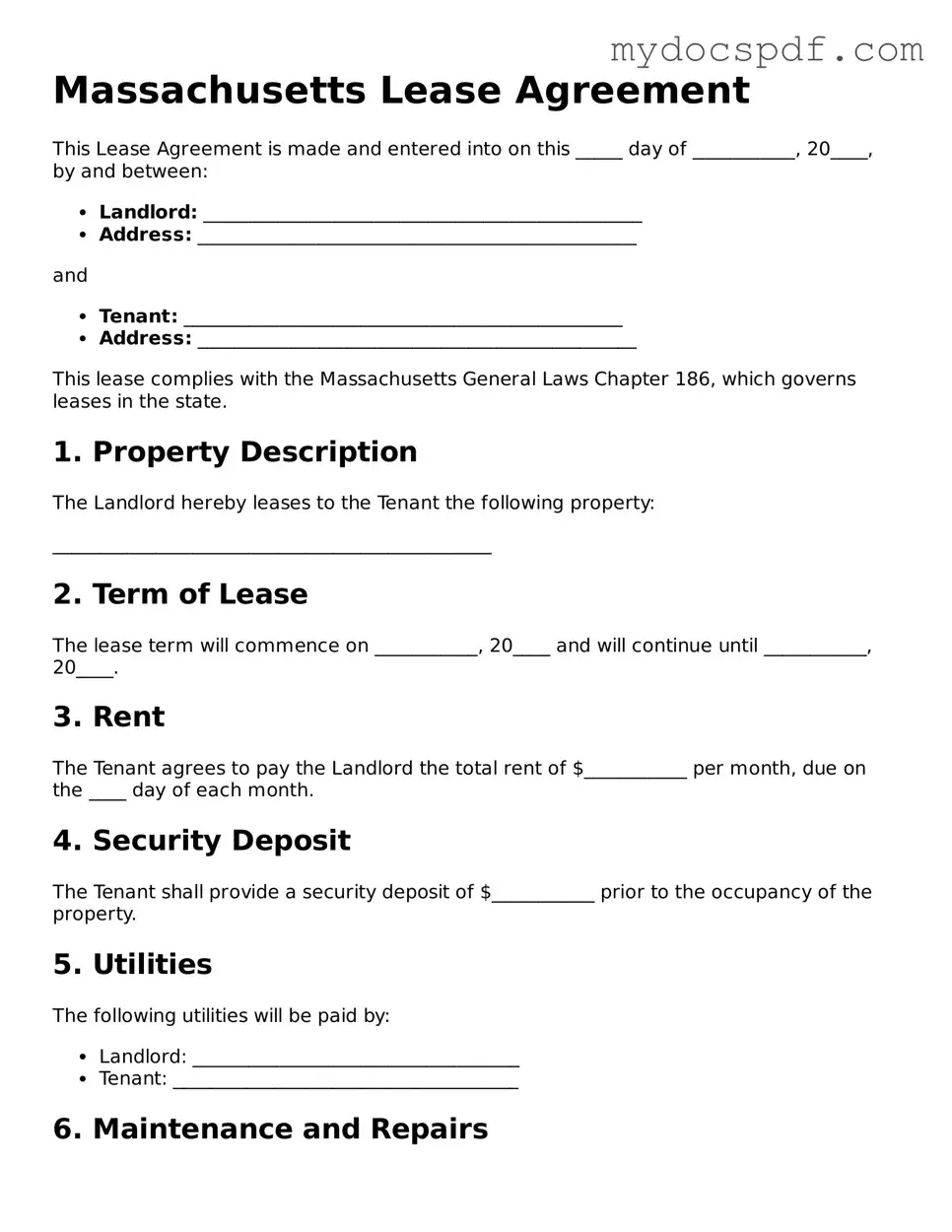Massachusetts Lease Agreement
This Lease Agreement is made and entered into on this _____ day of ___________, 20____, by and between:
- Landlord: _______________________________________________
- Address: _______________________________________________
and
- Tenant: _______________________________________________
- Address: _______________________________________________
This lease complies with the Massachusetts General Laws Chapter 186, which governs leases in the state.
1. Property Description
The Landlord hereby leases to the Tenant the following property:
_______________________________________________
2. Term of Lease
The lease term will commence on ___________, 20____ and will continue until ___________, 20____.
3. Rent
The Tenant agrees to pay the Landlord the total rent of $___________ per month, due on the ____ day of each month.
4. Security Deposit
The Tenant shall provide a security deposit of $___________ prior to the occupancy of the property.
5. Utilities
The following utilities will be paid by:
- Landlord: ___________________________________
- Tenant: _____________________________________
6. Maintenance and Repairs
The Tenant agrees to maintain the property in good condition and notify the Landlord immediately of any urgent repairs needed.
7. Governing Law
This agreement will be governed by the laws of the Commonwealth of Massachusetts.
8. Signatures
Both parties agree to all terms outlined in this Lease Agreement.
Landlord Signature: __________________________ Date: ___________
Tenant Signature: ____________________________ Date: ___________
